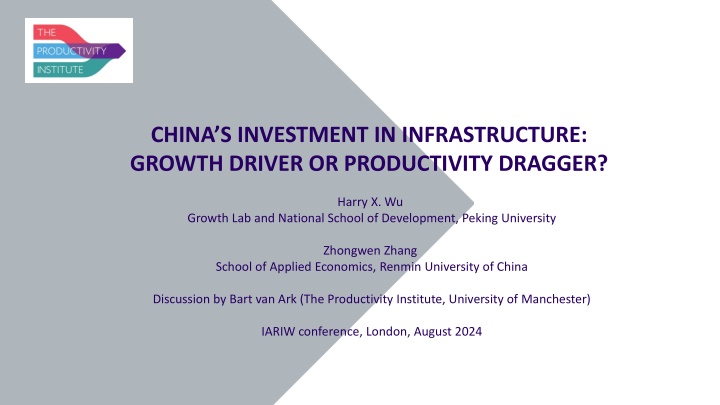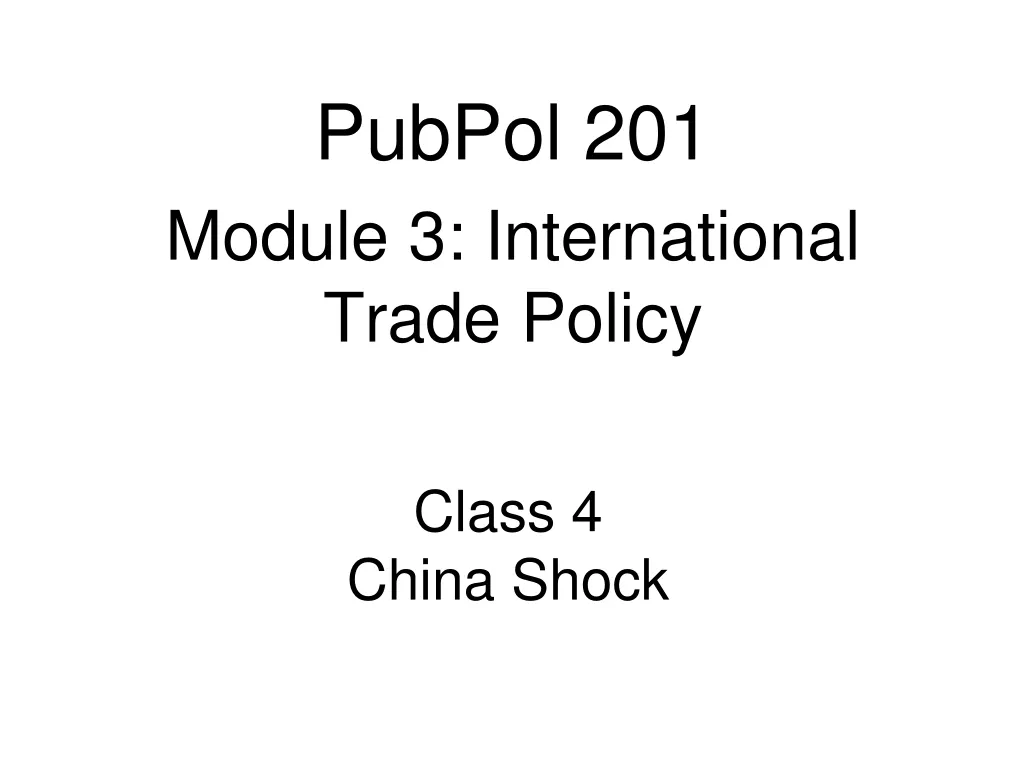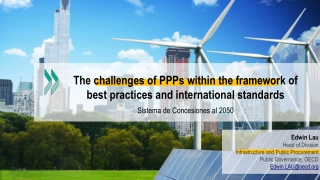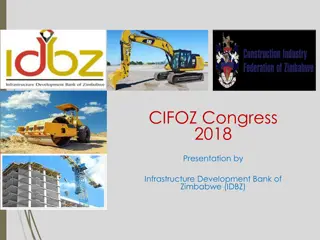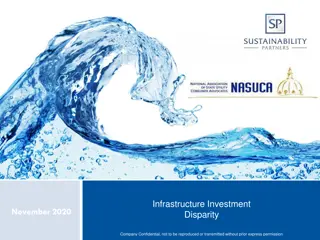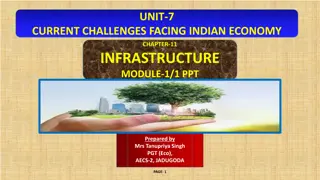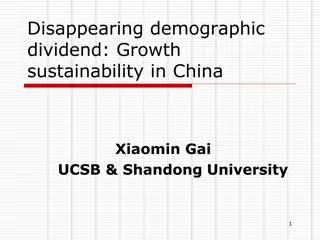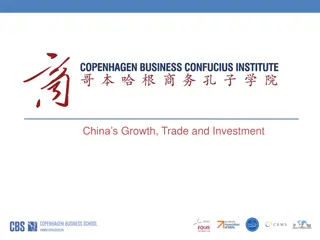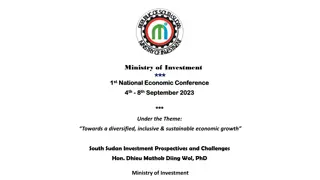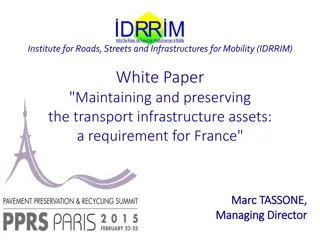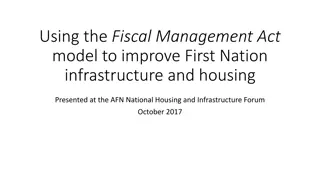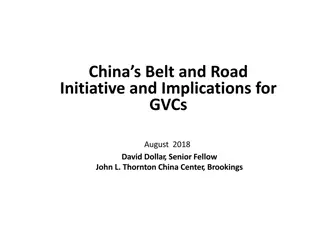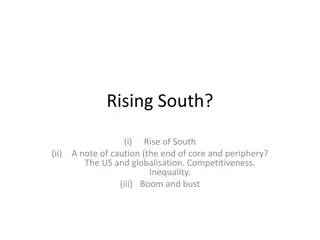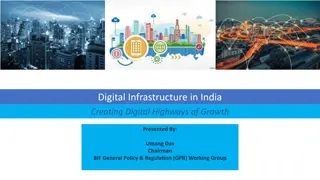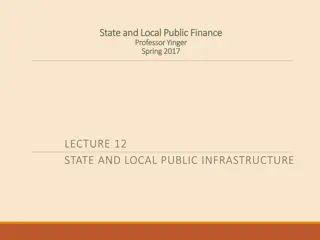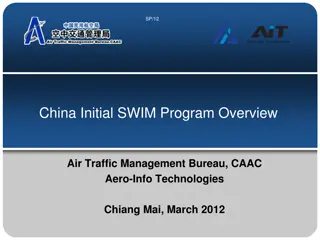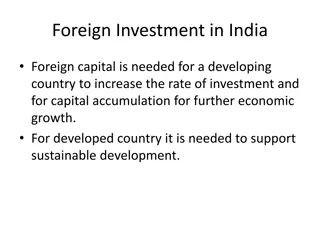China's Infrastructure Investment and Growth Impact
China's investment in infrastructure as a driver or dragger of growth is explored in this paper. The study analyzes the impact of government infrastructure projects on GDP, labor reallocation, and productivity in China from 1992 to 2018. Key findings show the significant contribution of infrastructure projects to the country's GDP, with insights on sectoral TFP growth, labor reallocation effects, and productivity gains and losses.
Download Presentation

Please find below an Image/Link to download the presentation.
The content on the website is provided AS IS for your information and personal use only. It may not be sold, licensed, or shared on other websites without obtaining consent from the author.If you encounter any issues during the download, it is possible that the publisher has removed the file from their server.
You are allowed to download the files provided on this website for personal or commercial use, subject to the condition that they are used lawfully. All files are the property of their respective owners.
The content on the website is provided AS IS for your information and personal use only. It may not be sold, licensed, or shared on other websites without obtaining consent from the author.
E N D
Presentation Transcript
CHINAS INVESTMENT IN INFRASTRUCTURE: GROWTH DRIVER OR PRODUCTIVITY DRAGGER? Harry X. Wu Growth Lab and National School of Development, Peking University Zhongwen Zhang School of Applied Economics, Renmin University of China Discussion by Bart van Ark (The Productivity Institute, University of Manchester) IARIW conference, London, August 2024
MOTIVATION OF THE PAPER China s rapid development in public funded infrastructure due to strong drive from central state agencies and local government competing for fast growth . Concerns about inefficiencies due to misallocation of labour and capital resources to large infrastructure projects For example, governance quality and institutional deficiencies can significantly affect efficiency of investment But empirical challenge in assessing the gains from infrastructure investments on China s growth and productivity against the cost from inefficiencies those investments. For example, no systematic project-level data on China s public infrastructure investment 2
PAPER APPROACH Authors opt for an industry-level growth accounting approach CIP/China KLEMS) to look at performance of industries most exposed to infrastructure: Infrastructure I -group initially engaged in government infrastructure projects Infrastructure II -group benefiting from spillover effects from the first group Decompose labour and capital reallocation effects to identify misallocation between individual industries due to government infrastructure investment, based on Aoki (2012) 3
KEY FINDINGS Industries engaged in the government s initial infrastructure projects ( Infrastructure I ) and those that benefited from the spillover effect of the former ( Infrastructure II )contributed just over half of China s GDP 1992- 2018 Only about 1/5thof Infrastructure s GDP contribution is due to Infrastructure I whereas there are strong spillover effect to Infrastructure II . China s TFP grew by only 0.55 percent per annum for the same period, which is entirely due to sectoral TFP growth gained from industries. An additional 0.75% annual TFP gain from labor reallocation across industries was mainly due to shifts out of agriculture But this labor reallocation gain was completely offset by the TFP loss from capital reallocation (-0.75%) in which Infrastructure I (-0.57%) and Infrastructure II (-0.17%) were major productivity draggers. 4
LITERATURE No consistent evidence of the significance and magnitude of the contribution for infrastructure from empirical studies. As infrastructure services are mostly provided through networks there is most likely a nonlinear relation with output. Econometric approaches to isolate impact of infrastructure on long- term growth face the usual challenges. Also substantial institutional deficiencies playing a role, including underperformance of public institutional investors, governance, regulatory issues, etc. Concerns about crowding out of private investment from large public sector funding. 5
METHODOLOGY IN TWO STEPS 1. Use a Jorgensonian type of growth accounting approach to decompose the industry origins of China s growth and productivity: Use newly revised and updated China Industry Productivity (CIP) database (also known as CIP/ChinaKLEMS) for 37 industries for 1992- 2018 (Wu et al., 2023) Gross output-based using interpolated series for five IO benchmark- year tables, in addition to capital and labour services Estimates sectoral TFP estimates, which are Domar aggregated by ratio of industry gross output to aggregate value added Key to identify the contributions of Infrastructure I (initial) and Infrastructure II (spillover) industry groups to GDP and TFP growth Infrastructure II industries are determined by impact coefficients of Infrastructure I from IO matrices but not clear how that is done 6
SIX KEY INDUSTRY GROUPS IS THIS GROUPING CORRECT? INDUSTRY GROUP CIP INDUSTRY CLASSIFICATION Infrastructure I (industries which directly engaged in government infrastructure investment) Utilities (CIP 25); Transport, storage and post services (CIP 29); Real estate services (CIP 32); Government services (CIP 34) Infrastructure II (industries which indirectly benefit through spillover effects measured by impact coefficients from IO matrices) Coal mining (CIP 2), Oil mining and processing (CIP 3 and CIP 13), Basic chemicals (CIP 14), Basic metals (CIP 17), Building materials (CIP 16), Machinery (CIP 19), Transport equipment (CIP 23), Construction (CIP 26), Commerce (CIP 27), and Financial services (CIP 31). Other Manufacturing 15 industries (CIP 4-12, CIP 15, CIP 18, CIP 20-22, CIP 24) Producer Services Telecommunication services (CIP 30) and technical, scientific and business services (CIP 33) Consumer Services Hotel and catering services (CIP 28), Education (CIP 35), Health care (CIP 36) and Other services (CIP 37) Agriculture 1 industry (CIP 1) 7
DECOMPOSITION OF GDP GROWTH CONFIRMS LARGE CONTRIBUTION FROM INFRASTRUCTURE II, IN PARTICULAR 8
SECOND STEP IN METHODOLOGY TO DETERMINE INEFFICIENCIES FROM INFRASTRUCTURE ON TFP 2. Decompose TFP contribution into sectoral contribution and industry reallocation effects Following Aoki (2012), apply counterfactual analysis by fixing factor inputs of any particular sector to its actual observed values Then reallocate the remaining factor inputs efficiently across the remaining sectors of the economy. Hence the only source of distortion (inefficiency) would be in the given sector. Decompose into the effects of capital and labour misallocation (or reallocation inefficiency ). 9
THE CORE EQUATION IS (25) The core equation measuring aggregate TFP: First component is Domar weighted sectoral TFP growth. Note that because of Domar weighting an improvement in industry TFP can have a direct effect on industry output, and an indirect effect via intermediate flows Second component refers to the reallocation efficiency term. The two terms are relativedistortion coefficients for capital and labour reflecting the distortion degree of factors cost in an industry contrasted to the average distortion degree of factors cost for the whole economy: 10
AOKIS (2012) TRICK TO COMPUTE REALLOCATION EFFICIENCY FOR EACH INDUSTRY The total reallocation effect for capital is divided up in the reallocation effect for industry i with observed inputs values whereas the other sectors m all assume the same factor prices assuming no inefficiencies: In the same way for the total reallocation effect for labour: 11
DECOMPOSITION OF TFP GROWTH INTO SECTORAL TFP AND REALLOCATION EFFECTS FROM CAPITAL AND LABOR 12
RECAP KEY FINDINGS Industries engaged in the government s initial infrastructure projects ( Infrastructure I ) and those that benefited from the spillover effect of the former ( Infrastructure II )contributed just over half of China s GDP 1992- 2018 Only about 1/5thof Infrastructure s GDP contribution is due to Infrastructure I whereas there are strong spillover effect to Infrastructure II . China s TFP grew by only 0.55 percent per annum for the same period, which is entirely due to sectoral TFP growth gained from industries. An additional 0.75% annual TFP gain from labor reallocation across industries was mainly due to shifts out of agriculture But this labor reallocation gain was completely offset by the TFP loss from capital reallocation (-0.75%) in which Infrastructure I (-0.57%) and Infrastructure II (-0.17%) were major productivity draggers. 15
MY COMMENTS Interesting approach to distinguish between Infrastructure I and Infrastructure II industry group but much will depend on the industry grouping, and sensitivity of results will need to be tested, especially spillovers by industry from group I to II: Especially Infrastructure I seems overly dependent on Real estate services (CIP 32); Government services (CIP 34). Infrastructure II industries are determined by impact coefficients of Infrastructure I from IO matrices but not clear how that is done The application of the Aoki (2012) method to distinguish inefficiencies from Domar weighted within industry results is interesting and results seem to pass the sniff test. Other factors, e.g. public spending, governance quality and institutional deficiencies. How to get your arms around those? 16
